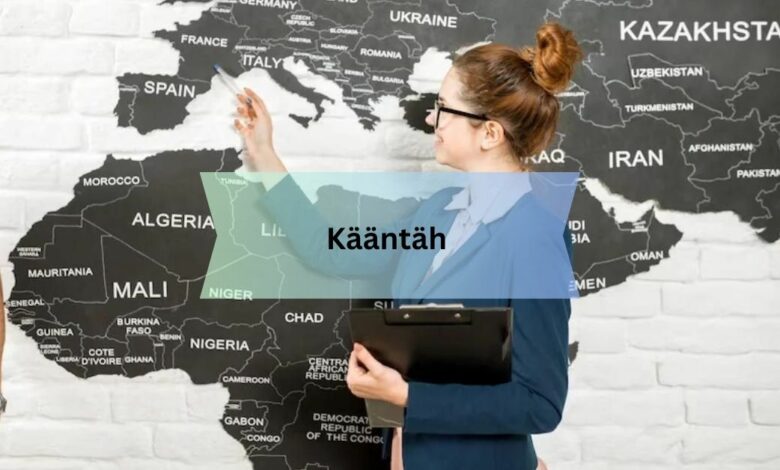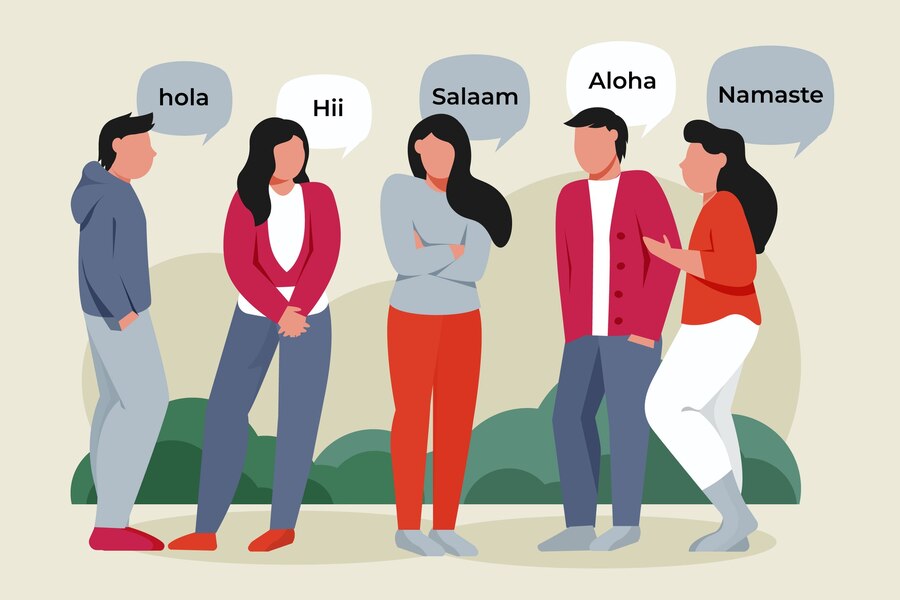Kääntäh – Connect Globally, Understand Deeply!

As a kääntäh, I’ve experienced the joy of connecting people through language, bridging cultural divides, and making information accessible to all. It’s fulfilling to see how effective communication can foster understanding and collaboration across diverse communities.
Kääntäh is a Finnish word that means “translator” or “interpreter” in English. They play a crucial role in bridging language barriers and facilitating communication between people who speak different languages.
Discover the magic of kääntäh, the language heroes who turn words into bridges across cultures!
What is Kääntäh?
Kääntäh is a unique term originating from the Finnish language, where it translates to “translator” or “interpreter” in English. The term is derived from the verb “kääntää,” which means “to translate” or “to interpret.” In Finnish grammar, the suffix “-h” is often added to verbs to indicate a person who acts, hence creating the term kääntäh.
In essence, kääntäh refers to professionals who specialize in translating written text or interpreting spoken language between different languages. They play a crucial role in facilitating communication and understanding across linguistic barriers, making it possible for people from diverse backgrounds to interact effectively and exchange ideas.
Why Do We Need Kääntäh?
1. Global Communication:
In our interconnected world, kääntäh is essential for enabling global communication. They ensure that people from different countries and cultures can understand each other’s languages, fostering international cooperation and understanding.
2. Cultural Exchange:

Kääntäh facilitates cultural exchange by making literature, art, and ideas accessible to a wider audience. They help preserve and promote cultural diversity by translating works from one language to another, allowing people to appreciate and learn from diverse cultural perspectives.
3. Business and Trade:
In the business world, kääntäh plays a vital role in facilitating international trade and commerce. They help companies communicate with clients, partners, and stakeholders in different countries, enabling smooth transactions and successful business relationships.
4. Education and Learning:
In the field of education, they help students access educational materials in their native language. They also support language learning by providing interpretation services during lectures and discussions, making education more inclusive and accessible to all.
5. Legal and Governmental Affairs:
In legal and governmental settings, kääntäh ensures that language barriers do not hinder justice or governance. They provide translation and interpretation services in courtrooms, government meetings, and diplomatic negotiations, ensuring accurate communication and legal proceedings.
Read: Asianismo – Cultural Identity And Unity
6. Healthcare and Social Services:
Kääntäh plays a critical role in healthcare settings, where clear communication is essential for providing medical care. They help patients and healthcare providers communicate effectively, ensuring accurate diagnosis, treatment, and patient education.
How To Learn Kääntäh – Know About It!
1. Language Proficiency:
To become a kääntäh, it’s essential to have a strong command of at least two languages. This includes not only fluency in speaking and writing but also a deep understanding of grammar, vocabulary, and cultural nuances.
2. Formal Education:
Many kääntäh pursue formal education in translation or interpretation. This can involve studying at universities or language institutes that offer specialized programs in translation studies, linguistics, or related fields.
3. Specialized Training:

Some kääntäh undergo specialized training programs or courses focused on translation and interpretation skills. These programs often include practice sessions, simulations, and workshops to develop proficiency in various translation techniques and strategies.
4. Experience and Practice:
Practical experience is crucial for becoming a skilled kääntäh. This can be gained through internships, freelance work, or entry-level positions in translation agencies, language services companies, or international organizations.
5. Continued Learning:
Learning is an ongoing process for kääntäh. They continually improve their language skills, stay updated on industry trends, and expand their knowledge through professional development courses, workshops, conferences, and networking events.
6. Use of Technology:
Kääntäh often leverages technology to enhance their work efficiency and accuracy. This includes using translation software, terminology databases, and online resources to aid in translation and interpretation tasks.
7. Professional Certification:
Many kääntäh pursue professional certification or accreditation from recognized translation and interpretation associations. This certification demonstrates their expertise and commitment to high-quality standards in the field.
Read: What Content Can a Video Production Company Help My Business Create?
What Can You Do With Kääntäh Skills?
1. Career Opportunities:
With kääntäh skills, you can pursue a variety of exciting career paths. You could work as a translator or interpreter in diverse fields such as business, law, healthcare, technology, media, and international organizations.
2. International Business:
Kääntäh skills are invaluable for businesses operating globally. You could work as a language specialist for multinational companies, helping them communicate effectively with clients, partners, and customers around the world.
3. Legal and Court Interpreting:

Kääntäh, with legal expertise, plays a crucial role in the legal field as a court interpreter. They are responsible for translating legal proceedings, documents, and conversations during court hearings and trials.
4. Healthcare Translation:
In the healthcare sector, kääntäh plays a crucial role in translating a wide array of essential medical documents and patient records. These documents include patient histories, medical reports, discharge summaries, prescriptions, consent forms, and detailed instructions for medications or treatments.
5. Media and Entertainment:
Kääntäh skills are highly valued in the media and entertainment sector due to their expertise in translating subtitles, dubbing films, and TV shows, and localizing content for global viewers. Their proficiency ensures accurate and culturally appropriate adaptations that enhance the audience’s viewing experience across diverse linguistic and cultural backgrounds.
6. Literary Translation:
If you’re passionate about literature, mastering kääntäh skills can open doors to a fulfilling career in literary translation. This involves translating a wide range of literary works, including books, poems, essays, and scholarly texts, for publication and broader readership enjoyment.
7. Technical and Scientific Translation:
Kääntäh, specializing in technical or scientific domains, plays a vital role in translating intricate technical manuals, complex scientific research papers, and detailed engineering documents. Their expertise ensures accurate and precise translations essential for effective communication in specialized fields.
FAQS:
1. What are the challenges faced by kääntäh?
Some challenges faced by kääntäh include maintaining accuracy and clarity in translations, navigating cultural differences, handling technical or specialized terminology, meeting deadlines.
2. How can one become a certified kääntäh?
Certification requirements for kääntäh may vary depending on the country or organization. Generally, obtaining certification involves completing relevant education or training programs, and passing proficiency exams..
3. What are the prospects for kääntäh?
With globalization and increasing cross-cultural interactions, the demand for skilled kääntäh is expected to grow. Advancements in translation technology and AI may impact the profession, but human expertise in language and cultural nuances remains irreplaceable.
Conclusion:
Kääntäh, a Finnish term for translator” or “interpreter, plays a vital role in bridging language barriers and facilitating effective communication among people from diverse linguistic backgrounds.
Read:




